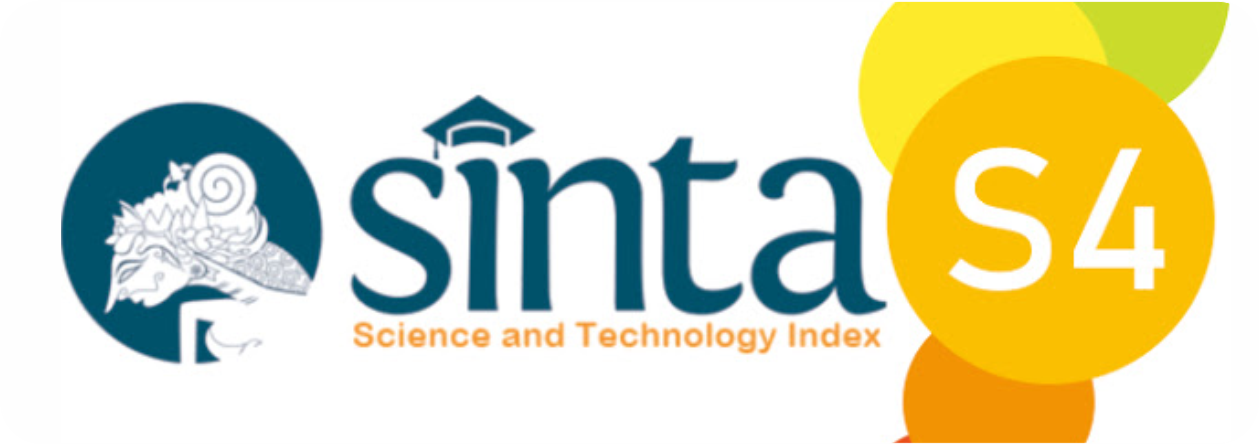Effective Thinking: Representation Implementation Word Square Learning Model on Islamic Religious Education
Abstract
The philosophy of the learning process carries out at least five main dimensions, namely active, innovative, creative, effective and fun. The content of Islamic religious education learning materials such as the Koran, hadith, morality and others, requires a plurality of learning models. Harmony between the content of learning materials and the models used was a necessity that cannot be ruled out. One of the learning models that can be used in learning Islamic religious education is the word square. This study aims to examine more deeply the benefits of word squares in improving and developing the ability to think effectively as an indicator of the learning model. The research instrument used written interviews, with a questionnaire model with five component indicators of the ability to think effectively. The number of respondents was 35 students of class X at SMAN Darussholah Singojuruh Banyuwangi. The average research results for measuring the five component indicators of the ability to think effectively reach 93.7 per cent which confirms that the word square learning model played a role in improving and developing students' effective thinking.
Downloads
References
Anderson, L. W., Krathwohl, D., Airasian, P., Cruikshank, K. A., Mayer, R. E., Pintrich, P., Raths, J., & Wittrock, M. C. (2005). Review Reviewed Work(s): A Taxonomy for Learning, Teaching, and Assessing: A Revision of Bloom’s Taxonomy of Educational Objectives Complete Edition. Source: Educational Horizons.
Fakhrurrazi, F. (2018). Hakikat Pembelajaran yang Efektif. At-Tafkir, 11(1). https://doi.org/10.32505/at.v11i1.529
Faqih, I. (2016). Kompetensi Dan Peran Guru Dalam Pembelajaran Pai. Jurnal Stainu, 1(1).
Gunawan, I. (2014). Revisi Taksonomi Bloom Ranah Kognitif: Kerangka Landasan Untuk Pembelajaran, Pengajaran, Dan Asesmen. Jurnal Pendidikan Dasar Dan Pembelajaran, 1.
Hadziq, A. F. (2017). Model-Model Pembelajaran dalam Persepektif Pendidikan Agama Islam. Jurnal Aksioma Ad-Diniyah, 5(2).
I Wayan Berata, S. P. (2022). Paradigma Pengajaran Dari Pembelajaran Tcl (Teacher Center Learning) Menuju Scl (Student Center Learning). Inovasi Jurnal Guru, 8(8).
Indrayati, I. (2019). Implementasi Paikem Pengaruhnya Terhadap Kompetensi, Kualitas, Efisiensi Dan Efektivitas Pembelajaran. Media Mahardhika. https://doi.org/10.29062/mahardika.v17i2.86
Ishak, I. (2021). Karakteristik Pendidikan Agama Islam. FiTUA: Jurnal Studi Islam, 2(2).
Isnaeni, N., & Hidayah, D. (2020). Media Pembelajaran Dalam Pembentukan Interaksi Belajar Siswa. Jurnal Syntax Transformation, 1(5).
Janawi. (2019). Memahami Karakteristik Peserta Didik dalam Proses Pembelajaran. Tarbawy: Jurnal Pendidikan Islam, 6(2).
Junaidi, J. (2019). Peran Media Pembelajaran Dalam Proses Belajar Mengajar. Diklat Review : Jurnal Manajemen Pendidikan Dan Pelatihan, 3(1). https://doi.org/10.35446/diklatreview.v3i1.349
Kapasi, A., & Pei, J. (2022). Mindset Theory and School Psychology. Canadian Journal of School Psychology, 37(1). https://doi.org/10.1177/08295735211053961
Mansyur, A. R. (2020). Memahami Karakteristik Berliterasi Peserta Didik Di Sekolah. Education and Learning Journal, 1(1). https://doi.org/10.33096/eljour.v1i1.44
Mizani, H., & Mahani, M. A. (2023). Memelihara Fitrah Manusia Melalui Pendidikan Islam Dalam Keluarga. Al-Falah: Jurnal Ilmiah Keislaman Dan Kemasyarakatan, 22(2). https://doi.org/10.47732/alfalahjikk.v22i2.206
Morel, G. M. (2021). Student-centered learning: context needed. In Educational Technology Research and Development (Vol. 69, Issue 1). https://doi.org/10.1007/s11423-021-09951-0
Munthe, N. B. (2020). Metode Word Square pada Pembelajaran Pendidikan Agama Islam (PAI) sebagai upaya meningkatkan motivasi, aktivitas, dan prestasi belajar siswa. Jurnal Teknologi Informasi & Komunikasi Dalam Pendidikan, 7(2). https://doi.org/10.24114/jtikp.v7i2.23243
Murni, N. F. (2021). Upaya Meningkatkan Keaktifan Siswa Dalam Proses Pembelajaran. Science, Engineering, Education, and Development Studies (SEEDS): Conference Series, 5(1). https://doi.org/10.20961/seeds.v5i1.56736
Nidawati. (2020). Penerapan Peran Dan Fungsi Guru Dalam Kegiatan Pembelajaran. Pionir Jurnal Pendidikan, 9.
Nurfauziyah, Rina; Mahmud, A. (2018). Pengaruh Instrumental Input Terhadap Hasil Belajar Siswa. Economic Education Analysis Journal, 2(1).
Nurhikmah, N. (2022). Inovasi Model Pembelajaran Pendidikan Agama Islam. Jurnal Al’Ilm, 1(1).
Priyono. (2018). The implementation of PAIKEM (Active, innovative, creative, effective, and exiting learning) and conventional learning method to improve student learning results. Journal of Social Studies Education Research. https://doi.org/10.17499/jsser.65763
Purwanto, N. (2019). Tujuan Pendidikan Dan Hasil Belajar: Domain dan Taksonomi. Jurnal Teknodik. https://doi.org/10.32550/teknodik.v0i0.541
Rahmat. (2021). Pembelajaran Pendidikan Agama Islam Abad 21 Prespektif Kitab Al Arba’in an Nawawiyah. Jurnal Ilmiah Pendidikan Agama Islam, 3(2).
Rinjani, C., Wahdini, F. I., Mulia, E., Zakir, S., & Amelia, S. (2021). Kajian Konseptual Model Pembelajaran Word Square untuk Meningkatkan Hasil Belajar Siswa. Jurnal Inovasi, Evaluasi Dan Pengembangan Pembelajaran (JIEPP), 1(2). https://doi.org/10.54371/jiepp.v1i2.102
Setiawan, B. A., & Jatmikowati, T. E. (2020). The Effect of Hots-Based Islamic Education on the Attitude of Religiosity and Its Impact on Improving Students Spirituality. https://doi.org/10.2991/assehr.k.201017.028
Sudrajat, A. (2008). Pengertian pendekatan, strategi, metode, teknik, taktik, dan model pembelajaran. Tersedia: Http://Akhmadsudrajat. Wordpress. Com/2008/09/12/Pengertian-Pendekatan-Strategi-Metode-Tekniktaktik-Dan-Model-Pembelajaran/.[20 Oktober 2008], 1.
Sugiarto, S., Neviyarni, S., & Firman, F. (2021). Peran Penting Sarana dan Prasarana Dalam Pembelajaran Bimbingan Konseling di Sekolah. JPT: Jurnal Pendidikan Tematik, 2(1).
Sukhanova, N. P. (2020). Modern Educational Strategy: Skill Training In Effective Thinking. Herald of Omsk University, 25(1), 59–63. https://doi.org/10.24147/1812-3996.2020.25(1).59-63
Syahputra, E., & Nasution, A. A. (2018). The Concept of HOTS and Relevant Learning Model. https://doi.org/10.2991/aisteel-18.2018.108
Tulyakov, O., & Lebid, A. (2021). Methodology Of Effective Thinking. Visnyk of the Lviv University, 39, 71–77. https://doi.org/10.30970/pps.2021.39.10
Wilson, L. O. (2016). Anderson and Krathwohl - Understanding the New Version of Bloom ’ s Taxonomy The Cognitive Domain : Anderson and Krathwohl - Bloom ’ s Taxonomy Revised. A Succinct Discussion of the Revisions to Bloom’s Classic Cognitive Taxonomy by Lorin Anderson and David Krathwohl and How to Use Them Effectively.
Yatimah, D., Adman, A., & Solihin, S. (2019). Application of the PAIKEM Method to Improve Learning Outcomes. https://doi.org/10.2991/iciir-18.2019.10
Yu, J., Kreijkes, P., & Salmela-Aro, K. (2022). Students’ growth mindset: Relation to teacher beliefs, teaching practices, and school climate. Learning and Instruction,
Copyright (c) 2023 Jurnal Pendidikan Islam Indonesia

This work is licensed under a Creative Commons Attribution-NonCommercial 4.0 International License.























